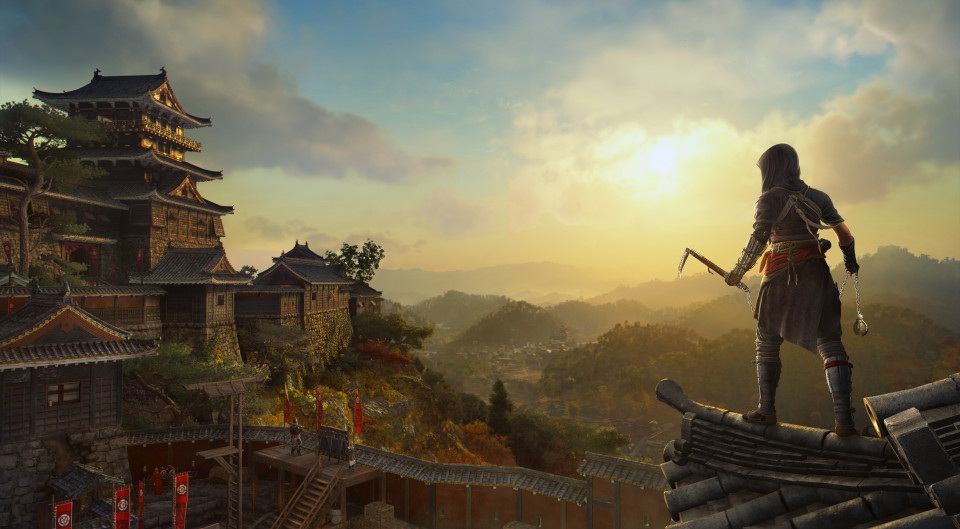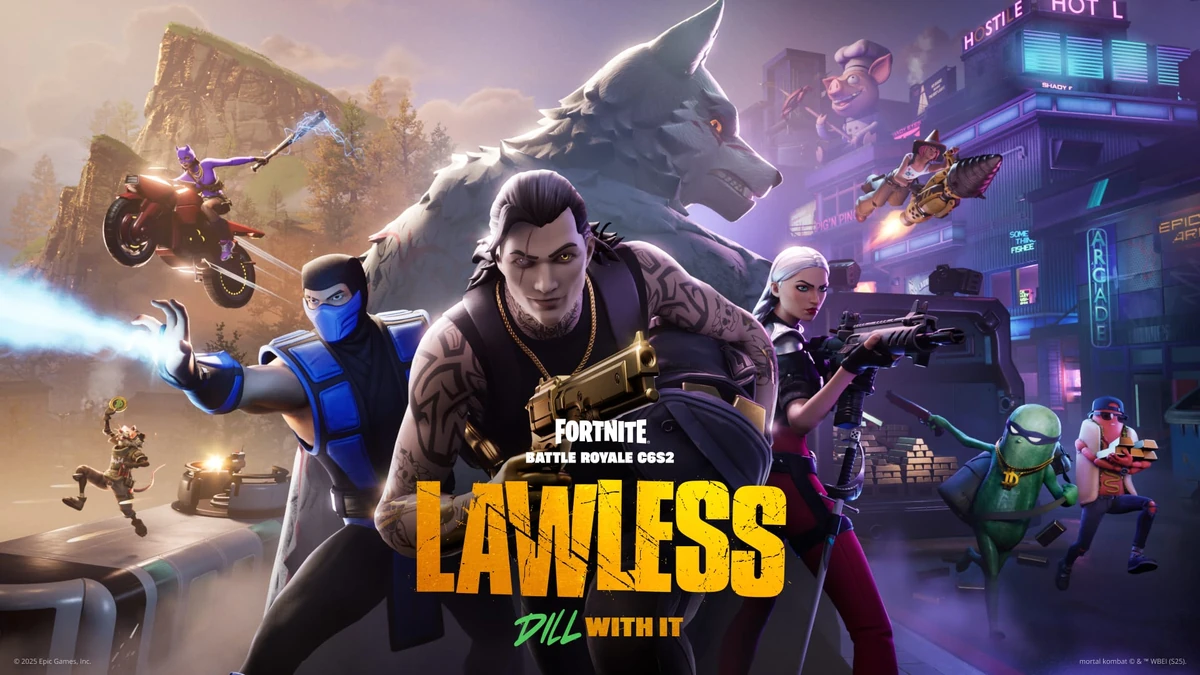Assassin’s Creed Shadows Gameplay: A Deep Dive into Ubisoft’s Latest Masterpiece
As of March 26, 2025, Assassin’s Creed Shadows has officially launched, captivating gamers worldwide with its breathtaking take on feudal Japan. Released on March 20, this 14th major installment in the Assassin’s Creed series, developed by Ubisoft Quebec, introduces players to a dual-protagonist adventure featuring Naoe, a stealthy kunoichi, and Yasuke, a powerful African samurai. With over 1 million players diving in on launch day, the buzz around Assassin’s Creed Shadows gameplay is undeniable. In this blog post, we’ll explore what makes this game’s mechanics, world, and narrative stand out, why it’s being hailed as Ubisoft’s best RPG yet, and how it balances tradition with innovation.
A Dual-Protagonist Dynamic: The Heart of Assassin’s Creed Shadows Gameplay
One of the most striking aspects of Assassin’s Creed Shadows gameplay is its dual-protagonist system, a nod to Assassin’s Creed Syndicate but evolved for the modern era. Naoe and Yasuke offer contrasting playstyles that cater to different player preferences. Naoe embodies the classic Assassin’s Creed fantasy—nimble parkour, silent takedowns, and a toolkit brimming with gadgets like grappling hooks, smoke bombs, and the iconic Hidden Blade. Her missions emphasize stealth, with mechanics like extinguishing lanterns to create shadows or crawling prone to avoid detection. This return to roots has been praised as the best stealth experience Ubisoft has crafted in over a decade.

Yasuke, on the other hand, flips the script. Inspired by the historical figure Japan’s first Black samurai, he’s a brute-force powerhouse wielding katanas, kanabos, and even a teppo rifle. His Assassin’s Creed Shadows gameplay shines in open combat, where weighty, visceral battles see blood and limbs flying—a stark contrast to Naoe’s subtlety. Players can switch between them outside of combat zones, allowing for strategic flexibility. Need to infiltrate a castle silently? Naoe’s your pick. Want to storm the gates and parry unblockable attacks with Yasuke’s engraved armor? He’s ready to smash through.
This duality isn’t just a gimmick—it’s a game-changer. The Assassin’s Creed Shadows gameplay loop thrives on this push-and-pull, encouraging players to adapt their approach based on the situation. Whether you’re a stealth purist or a combat enthusiast, there’s a rhythm here that feels fresh yet familiar.
Feudal Japan: A Living, Breathing Open World
The setting of Assassin’s Creed Shadows—16th-century Sengoku-era Japan—is a dream come true for fans who’ve clamored for this backdrop since the series’ inception. The open world, roughly the size of Assassin’s Creed Origins, is dense with detail, from bustling castle towns to war-torn plains. What elevates Assassin’s Creed Shadows gameplay is its dynamic environment. Seasons cycle through the game, altering how you interact with the world. In winter, frozen ponds block aquatic escapes; in spring, long grass offers concealment. Dynamic weather like rain muffles footsteps, adding layers of tactical depth.
Exploration feels less guided than in recent entries, with fewer map markers and more emphasis on organic discovery. Vantage points highlight points of interest rather than spoon-feeding objectives, while new mechanics like bribing officials or building a spy network flesh out the assassin fantasy. The Assassin’s Creed Shadows gameplay rewards curiosity—pet a stray cat, and it might join your hideout. It’s these tiny details that make Japan feel alive, turning virtual tourism into a core pillar of the experience.
Stealth and Combat: Sharpened to Perfection
Ubisoft has spent the last decade honing its open-world formula, and Assassin’s Creed Shadows gameplay is the sharpest it’s ever been. Stealth fans will revel in Naoe’s toolkit. Her grappling hook doubles as a traversal and assassination tool, letting you yank enemies from rooftops. The Observe mechanic replaces eagle vision, requiring manual tagging of foes, which heightens the tension of scouting. Castles—mini-fortresses packed with guards and loot—test your stealth prowess, demanding you eliminate elite Samurai Daisho to claim rewards.
Combat, meanwhile, is Yasuke’s domain. The Assassin’s Creed Shadows gameplay in battle feels consequential, with every swing carrying weight. Parrying reflects damage back at foes, and gear engravings let you customize your approach—think stealth bonuses for Naoe or counterattack boosts for Yasuke. Critics have noted that combat can grow repetitive against high-level enemies, requiring dozens of hits, but the spectacle of Yasuke’s brutality keeps it engaging.
Narrative and Immersion: A Tale of Two Heroes
The Assassin’s Creed Shadows gameplay isn’t just about mechanics—it’s anchored by a gripping story. Naoe’s revenge-driven arc begins with her village’s destruction, while Yasuke’s journey explores his mysterious summons to Japan and ties into the broader Assassin’s Creed lore of Assassins versus Templars. The prologue hooks you fast, blending personal stakes with historical intrigue. Yasuke’s presence as a towering outsider draws awed stares from NPCs, enhancing immersion, while Naoe’s quieter moments—like a tense tea ceremony—build character depth.
However, the pacing stumbles at times. Early hours can feel slow as the game sets its stage, but once the duo unites, the narrative finds its stride. The Assassin’s Creed Shadows gameplay shines brightest when it leans into this partnership, offering missions that flex both playstyles. Romance options and hideout customization add personal touches, though some fans lament the modern-day Animus storyline’s diminished role.
Technical Brilliance on Current-Gen Hardware
Built exclusively for current-gen platforms (PS5, Xbox Series X/S, PC, and macOS), Assassin’s Creed Shadows leverages new tech to stunning effect. Ray-traced global illumination adapts lighting to destructible environments—smash a door, and shadows shift accordingly. At up to 2160p and 60 FPS, the visuals are Ubisoft’s best yet, with the PS5 Pro’s extended ray tracing adding reflective polish to Japan’s landscapes. The Assassin’s Creed Shadows gameplay feels smooth and responsive, a testament to the extra polish from two delays (originally slated for November 2024, then February 2025).
The Verdict: Does It Deliver?
So, does Assassin’s Creed Shadows gameplay live up to the hype? Largely, yes. It’s not perfect—the combat’s repetition and early pacing dips hold it back from greatness—but it’s a triumph nonetheless. Reviews, like IGN’s, praise it as “the best version of the open-world style Ubisoft’s honed for a decade,” while player sentiment on platforms like PS5 (where it’s trending toward a 4+ rating) echoes this enthusiasm. With 2 million players already by late March, its launch success rivals Origins and Odyssey.
For Ubisoft, Shadows is a lifeline after a rocky few years. Financially, it’s poised to match Valhalla’s billion-dollar haul, restoring faith in a franchise that’s weathered criticism for straying too far from its roots. The Assassin’s Creed Shadows gameplay strikes a balance—honoring stealth heritage while embracing RPG evolution. It’s not a radical reinvention, but it doesn’t need to be. It’s a refined, immersive romp through feudal Japan that proves Ubisoft still has what it takes.
Final Thoughts
Whether you’re scaling rooftops as Naoe or cleaving foes as Yasuke, Assassin’s Creed Shadows gameplay offers something for every Assassin’s Creed fan. Its world is a visual feast, its mechanics are polished, and its dual heroes breathe new life into a storied series. As we await DLC updates and watch its cultural impact unfold, one thing’s clear: Shadows is a must-play in 2025. What’s your favorite part of the game so far? Drop your thoughts below—we’d love to hear!



